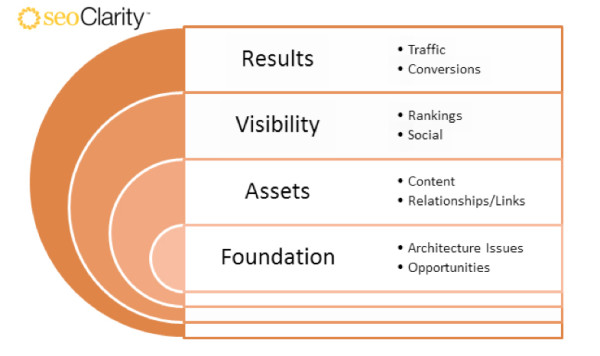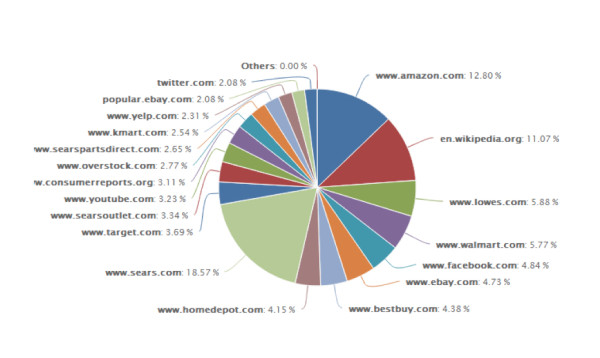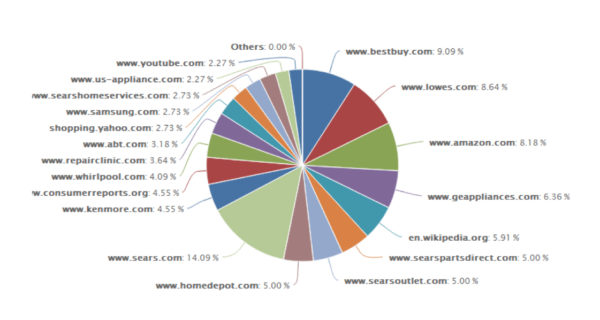Secrets Of Successful Enterprise SEO Part 1: Operational Planning For SEO
Believe it or not, one of the most challenging aspects of taking on the responsibility of an enterprise site is not determining what needs to be done. There is usually no dearth of opportunities to improve things and no end to the long list of tasks that need to get done — yes, even at […]
Believe it or not, one of the most challenging aspects of taking on the responsibility of an enterprise site is not determining what needs to be done. There is usually no dearth of opportunities to improve things and no end to the long list of tasks that need to get done — yes, even at those “hallowed” sites that you may think completely dominate SEO and can do no wrong!
Rather, the challenge is to identify, prioritize and execute on these tasks, all the while ensuring that you are prepared and able to get the internal buy-in from all the stakeholders — from the bosses to the development teams and everyone in between.
Every top-notch enterprise SEO I know has developed ways to deal with exactly this. They have built systems, processes and techniques that provide them a framework for picking apart a large and challenging issue and helping to solve it in a manageable way.
In the world of management, this process is called “operational planning.” It’s a valuable process framework to get familiar with and has almost universal application to any project you work with.
Operational Planning For SEO
Here is quick definition from Wikipedia on what Operational Planning is:
Operational planning is the process of linking strategic goals and objectives to tactical goals and objectives. It describes milestones, conditions for success and explains how, or what portion of, a strategic plan will be put into operation during a given operational period… An operational plan is the basis for, and justification of an annual operating budget request.
Over the years, I’ve found an approach to operational planning that’s incredibly simple to implement and incredibly powerful in the results it generates. It relies on answering 3 simple questions:
- Where are we now?
- Where do we want to be?
- How do we get there?
Let’s jump in and look at how this would apply to your SEO planning needs.
Where Are We Now?
The first step in undertaking any SEO project (or any project at all, for that matter) is to identify exactly what your current status is. Think of this as your personal State of the Union — your state of current affairs. It covers every aspect of how you are doing in each of the areas of your SEO from how it compares to the past to how it has grown or declined.
For example, below are the areas I take into consideration, along with a sampling of what I would look at in each area. Of course, there are many more things to look at in each — but you get the idea.
You can either start from the inside out (starting with foundations) or outside in (starting with results). Your choice.
Note:
- A common mistake is to start with Visibility as a measure of the current state of affairs. As mentioned in my previous article, your goal is not the highest possible rankings — your goal is the highest possible traffic (and results)!
- Another common mistake to avoid is approaching your entire site as if it was selling the same product. Unless you are part of a very small minority of companies, you probably have a multitude of products, services and offerings.
Segmentation is a powerful tool that helps you drill down and view your performance at a more granular level to identify differences in performance. Imagine the President of the United States announcing economic growth of 2%. While that is great, as you peel back the layers, you may find that Industrial output grew 4%, but consumer spending declined by ½ a percent. This insight tells you what area to focus your effort on.
The same is true for understanding where you are now. Do the work needed to segment your performance reporting by different business lines or units to understand how each one is doing.
Where Do We Want To Be?
Every marketer has the goal of more traffic and more conversions (or at least, should!). While you can identify where you need to be in many different ways, I prefer looking at the competitive landscape to help motivate me about where I should be. No matter what industry you are in, there is always a segment or two of your business where someone is doing better than you.
Competitive intelligence is an extremely powerful tool to help understand where you stand in the search landscape.
It’s important, though, to identify who your true competitors are — not just those you think are your competitors, but those that are truly beating you in organic search. In its very simplest form, you can get a better understanding of your own top competitors by aggregating the top sites for each of your tracked keywords and building a visualization that shows what each domain’s share of the SERPs is.
For example, at an enterprise such as Sears, the executives may believe that their competitors are Target and Wal-Mart. But in reality, from a search perspective, they will have hundreds of competitors based on each product line they sell.
Here is what a true competitor report looks like for Sears overall (based on a biased sampling of keywords where Sears actually does well):
Here is the same report segmented for appliances:
Notice the difference in the competitive set? Also, do you see any of the competitors considered the “standard” competitors?
Of course, you can get more sophisticated by weighting each ranking or applying a qualitative measure on top of it, but that is a topic for another day.
In order to define where you want to be, aggregate, analyze and segment your competitors’ information against your own to identify gaps in each of your SEO efforts (foundation, assets and visibility). This should result in identification of new opportunities in each of those areas.
You can identify obvious gaps by examining where your competitors are optimizing for keywords you are not optimizing; whether they have content you don’t have; or even if they have relationships you don’t have. You can also delve into what your competitors are doing on-site with semantic markup, internal links and more. Collecting this data can take time if you’re planning to do it manually, but it’s well worth it!
How Do We Get There?
The almost-final step in the process is identifying how to bridge the gap between where you are and where you want to be — your SEO roadmap. This involves:
- Building a list of prioritized, high-level projects
- Translating the projects into smaller sub-tasks
- Assigning a priority and impact to each task
- Forecasting the impact
Forecasting can be a tough challenge when you are operating an enterprise site with hundreds of thousands (if not millions) of keywords and content pieces.
A common mistake is to simply take all the keywords you know about and, based on a CTR curve, estimate what the traffic would be if you could get them all into position #1 (or into the top three positions). This is probably the worst way to create a forecast because it ignores seasonality, the individual rank positions of your target keywords, and the different levels of competitiveness.
Take the time to collect the search volume trends and plot out the ranking improvements from your starting point to 12 months out. Then build UP a forecast based on the roll-up of the keyword data. This can provide a solid base to extrapolate from for the rest of your site and, when you share it internally, garner much more confidence than a wild estimate.
In Conclusion
While the above operational planning framework looks at the core elements of building a roadmap, there is an important aspect not to forget — tracking, monitoring and being able to report back on the actual impact of the operational plan.
As we look forward to the start of a new year, this technique should be helpful to provide a different perspective on how you manage your SEO.
Before you ask for a budget or ask for support on an initiative, having an operational plan will ensure that you win that support as you had the details planned and thought through.
Opinions expressed in this article are those of the guest author and not necessarily Search Engine Land. Staff authors are listed here.
Related stories



